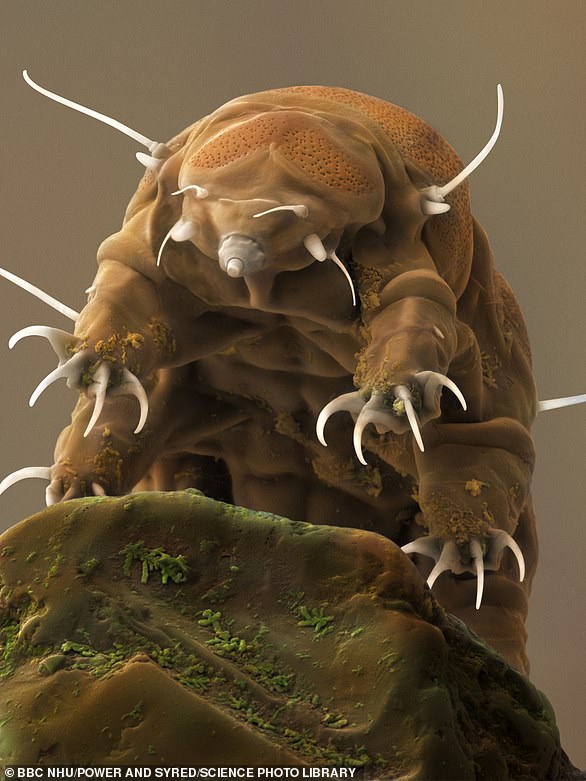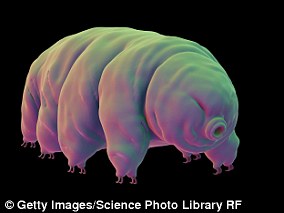Scientists studying mysterious creatures called tardigrades may have found a new potential tool in their quest to slow human aging.
Sometimes called water bears, these eight-legged, almost microscopic animals can survive in conditions that would kill most other life forms.
This is because they have proteins that form gels inside cells and slow down vital processes and reduce cell damage, and the gel could be an anti-aging elixir.
A team of international researchers introduced tardigrade proteins into human cells in a laboratory and found that they slowed down and entered a kind of hibernation, like those of “indestructible” creatures.
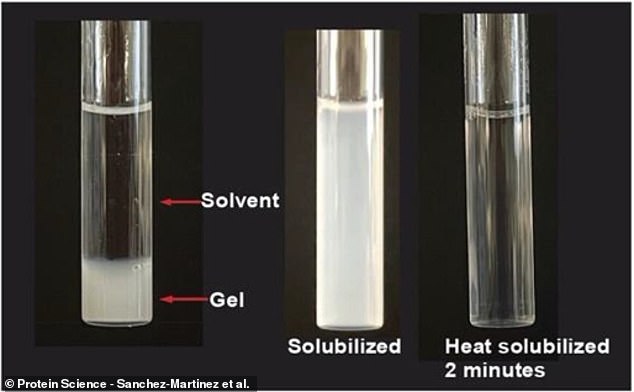
A team of international researchers introduced tardigrade proteins into human cells in a laboratory and found that they slowed down and entered a kind of hibernation, like those of “indestructible” creatures.
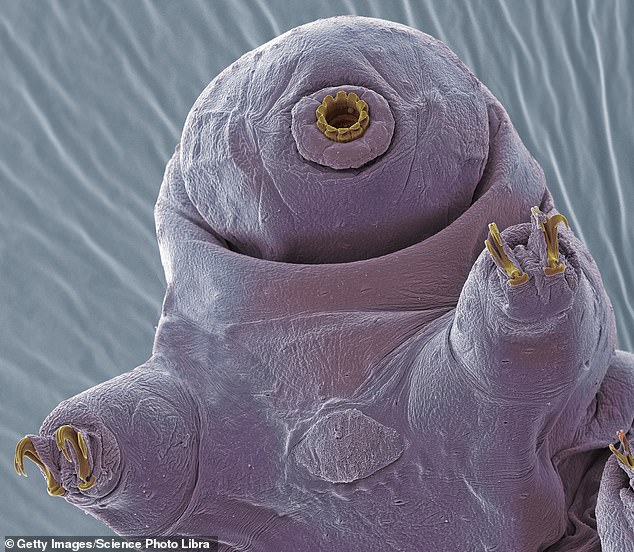

Tardigrades are small, segmented, water-dwelling microanimals with eight legs that live in moist habitats such as mosses or lichens.
The new results offer clues to a way to put people’s cells or tissues into a form of suspended animation, just as a tardigrade does when under stress.
Just two-hundredths of an inch long, tardigrades can survive the immense pressure of the deep sea, extremely high and low temperatures, complete dehydration, prolonged famine, and even the vacuum and radiation of outer space.
Their secret: a form of suspended animation.
When tardigrades get stressed, their entire body begins to slow down, even on a microscopic level.
They can enter a state called biostasis, where they can tolerate almost complete dehydration for years until water is available again.
Now, scientists have discovered that the proteins that make biostasis possible in tardigrades can have a similar effect on human cells.
Lead research scientist Silvia Sánchez-Martínez from the University of Wyoming said: “Surprisingly, when we introduce these proteins into human cells, they gel and slow down metabolism, just like in tardigrades.
“In addition, like tardigrades, when human cells containing these proteins are put into biostasis, they become more resistant to stress, which confers some of the capabilities of tardigrades to human cells.”
This discovery could mean that tardigrades are an important weapon in the fight against human aging.
If our cells could resist DNA damage caused by the sun or toxic exposures like tardigrade cells do, then perhaps the entire aging process could be slowed down, the scientists behind the new study suggested.
More immediately, this discovery means that human stem cells or drugs such as blood products for hemophilia that require refrigeration could be shipped without refrigeration, expanding access to life-saving medications for people in developing countries.
The crucial part of this process is a set of proteins called CAHS, “intrinsically disordered” proteins that slow the tardigrade to the point of biostasis.
In biostasis, the animal becomes a ‘tun’, the name for a dormant tardigrade.
This ability is one of many that allows them to survive in extreme conditions.
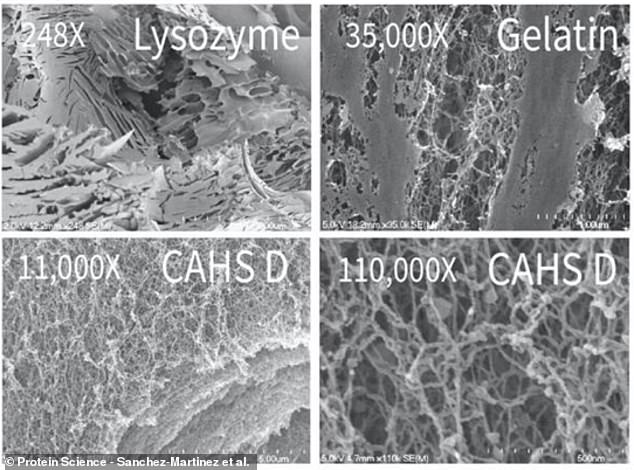

This image compares a protein that does not form gels, lysozyme (top left), with two that do: CAHS D (bottom) and gelatin (top right). Gelatin, the common ingredient in desserts, has a structure very similar to that of tardigrade CAHS proteins, suggesting its ability to form gels.
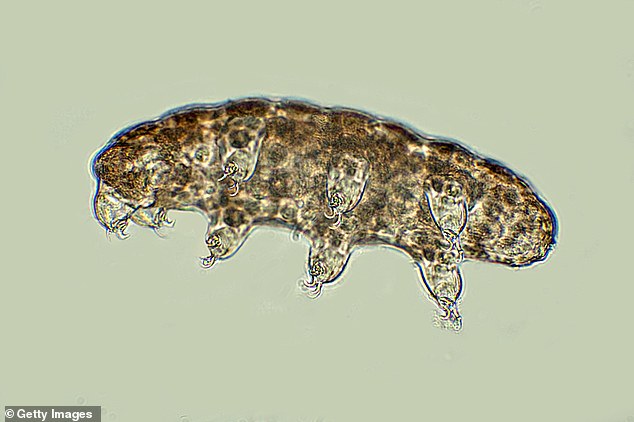

Tardigrades are classified as Extremophiles because they can survive in dry conditions by changing to a desiccated state, in which they can remain for many years.
In the tun state, tardigrades can withstand all types of abuse without being injured.
They may be exposed to many times the amount of radiation that would kill a person, but the damage suppressors in their DNA keep them safe.
They can be heated up to 300 degrees Fahrenheit or cooled to almost 500 degrees below zero.
As long as they remain in biostasis, they will be safe.
Scientists used to think this was due to a sugar called trehalose, which tardigrades and other dehydration-tolerant microorganisms can produce.
But more recently, they discovered that’s not the whole picture.
While trehalose appears to protect some of the sensitive biological material, it appears that the CAHS proteins are responsible for slowing everything down and stopping the tardigrades in time.
In biostasis, the fluids in a tardigrade’s body turn into gels as the molecules slow down to enter the tun state.
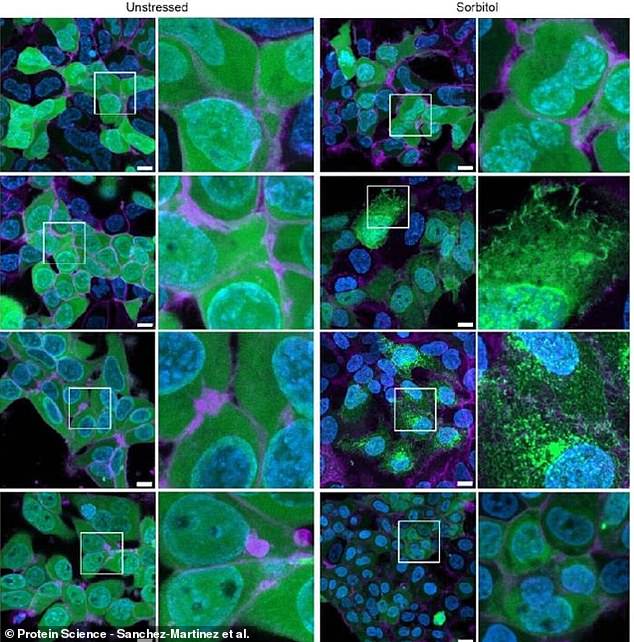

Human kidney cells treated with CAHS D (second row from top) survived stress much better than untreated cells (top row) or cells that received gene therapy to become stress tolerant (bottom two rows).
Previous research showed that as the tardigrade begins biostasis, its body produces more and more CAHS proteins.
And the more CAHS proteins, the more gel-like the inside of the animal becomes.
In the new study, introducing CAHS proteins into human cells caused them to slow down and also solidify.
“Surprisingly, when we introduce these proteins into human cells, they gel and slow down metabolism, just like in tardigrades,” saying The author of the study, Silvia Sánchez-Martínez, senior research scientist at the University of Wyoming.
“In addition, like tardigrades, when human cells that have these proteins are put into biostasis, they become more resistant to stress, which confers some of the capabilities of tardigrades to human cells,” said Sánchez-Martínez.
What’s more, the process could be reversed, just like tardigrades coming out of biostasis.
“When stress is relieved, the tardigrade gels dissolve and human cells return to their normal metabolism,” said senior author Thomas Boothby, an assistant professor of molecular biology at the University of Wyoming.
The results offer insight into how tardigrades can cultivate such preternatural stress tolerance, but that’s not all, Boothby, Sánchez-Martínez and their co-authors wrote: “Our findings provide an avenue to pursue technologies focused on inducing biostasis in cells.” and even whole organisms to slow aging and improve storage and stability.
He study was published in the journal Protein Science.


